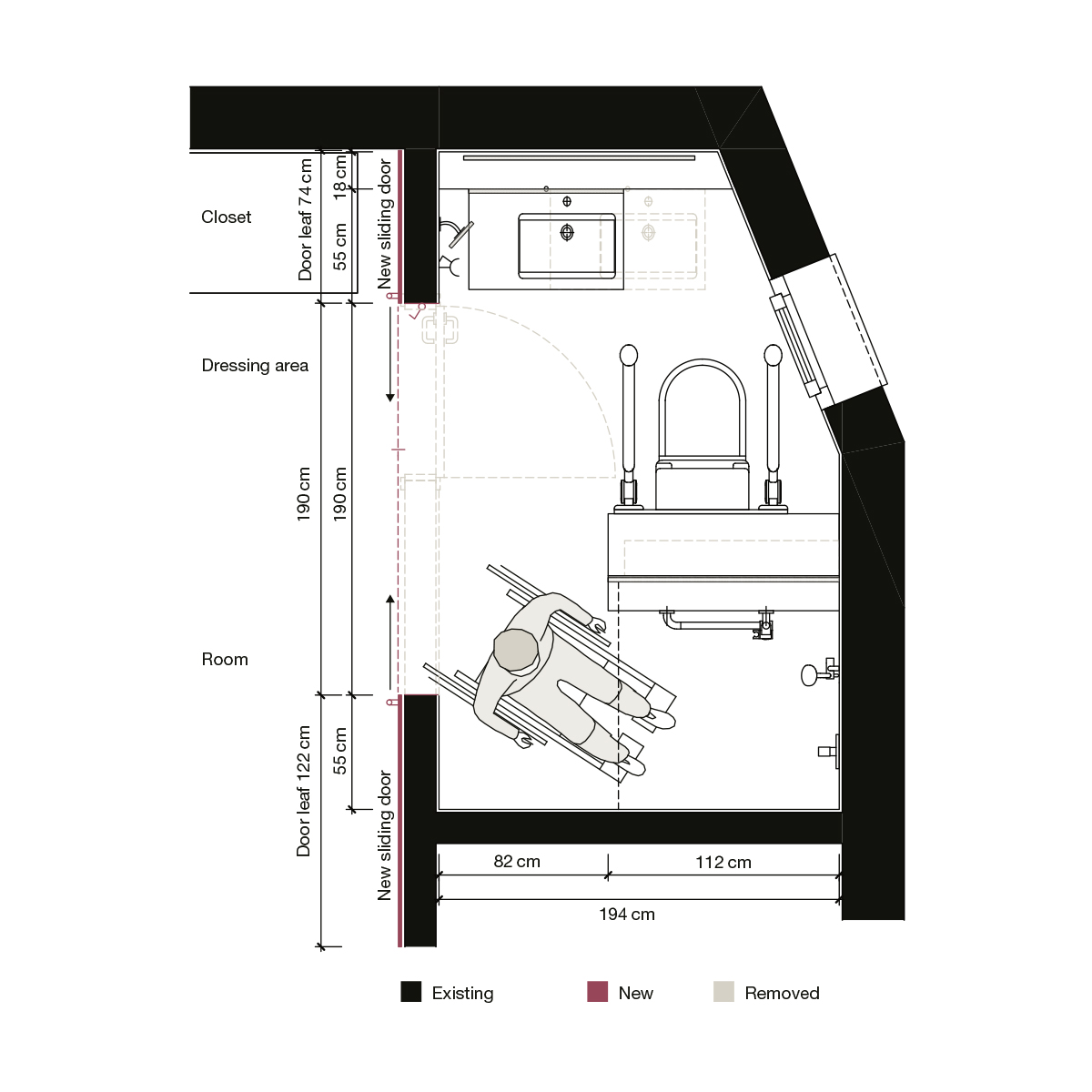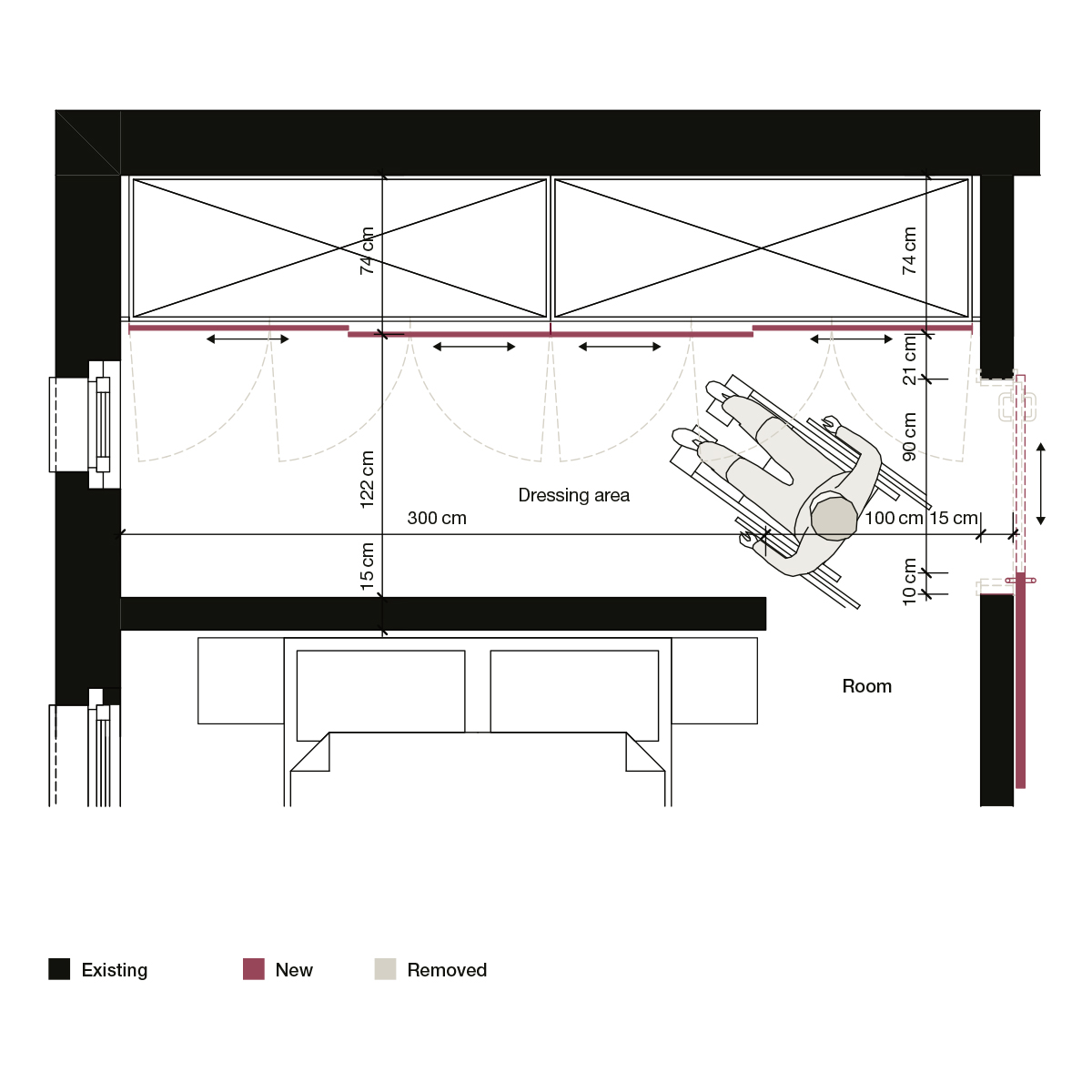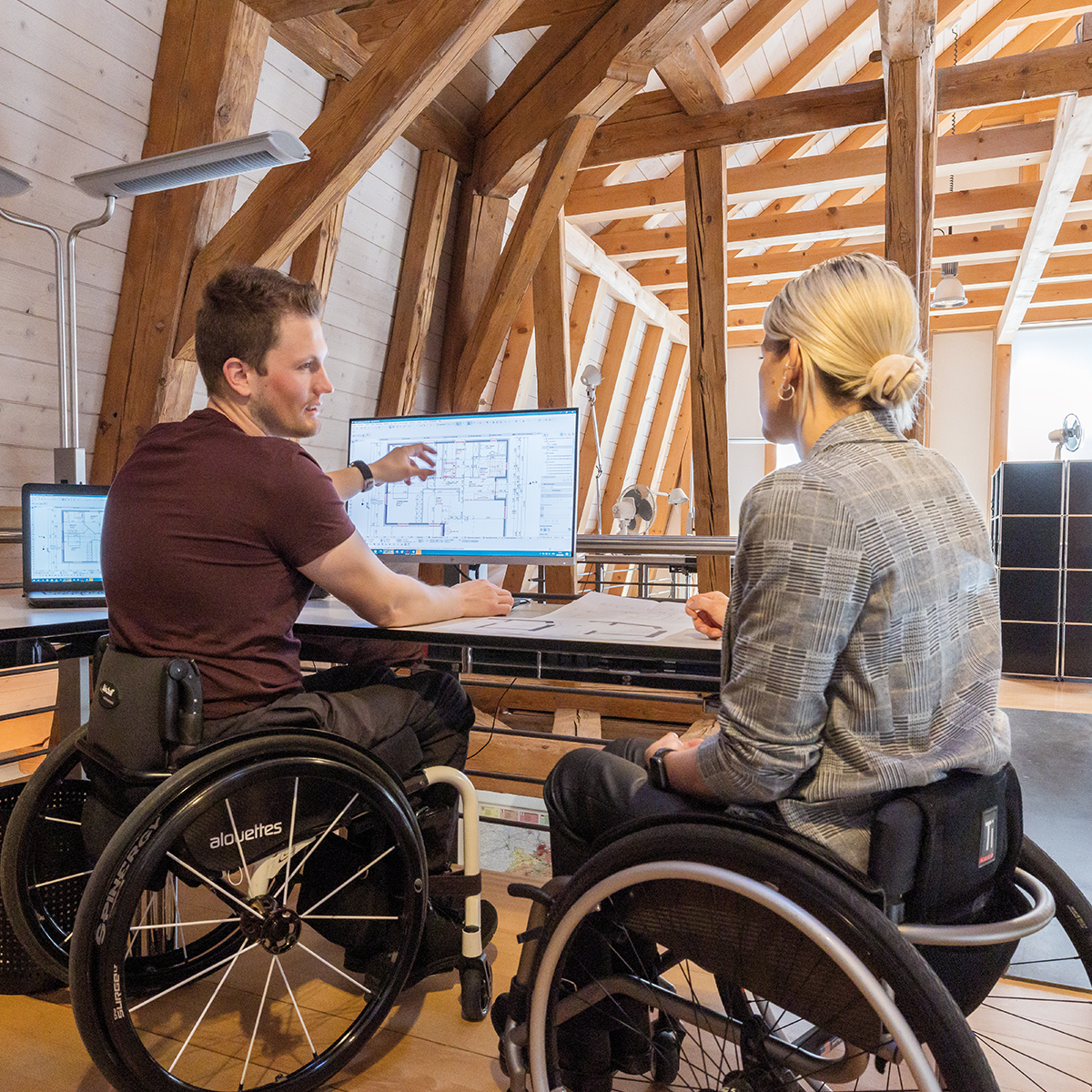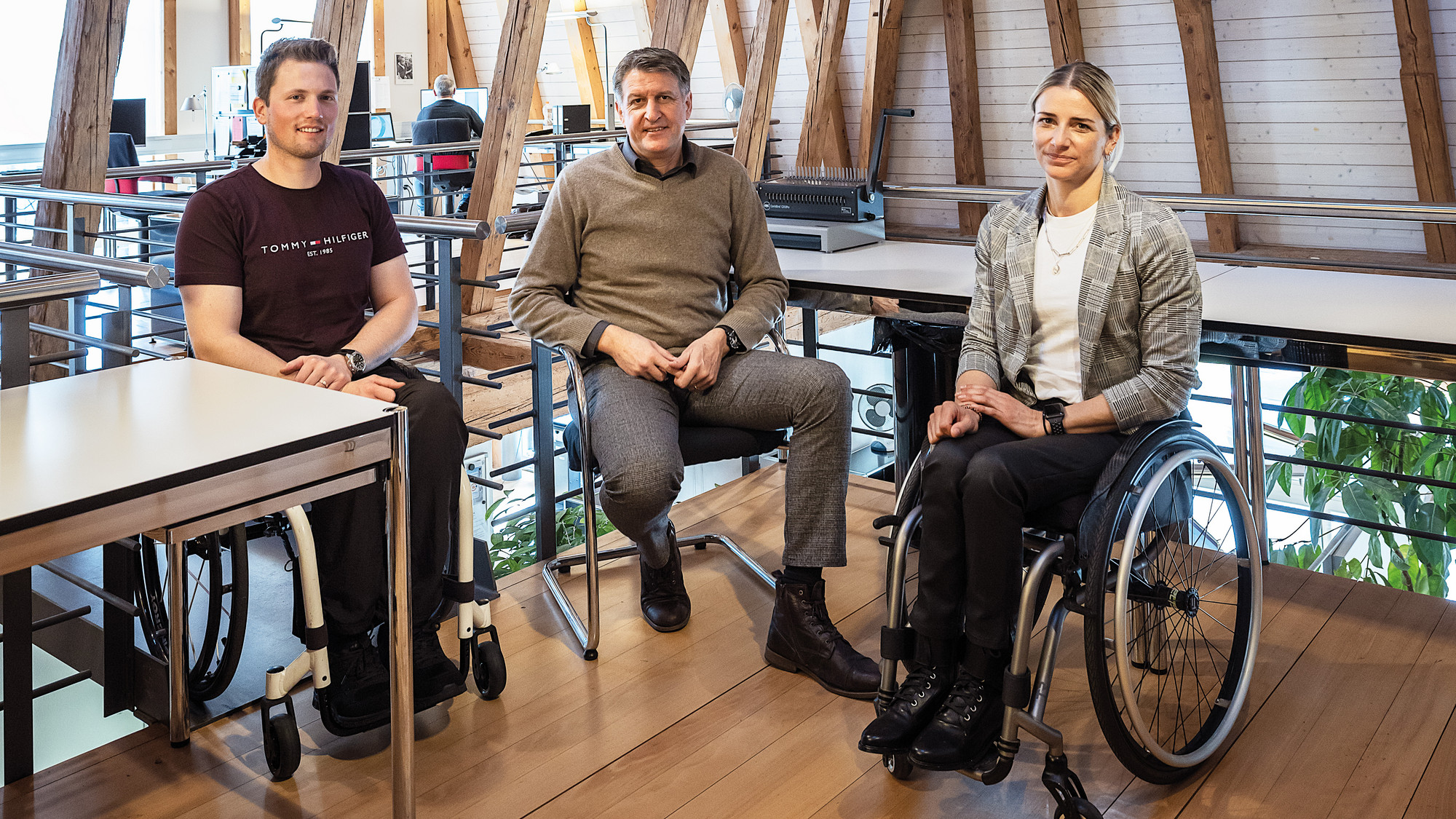The Path to an accessible Home
Author: Livio Fürer
What is accessible construction and what are the particular needs of people with physical disabilities? Architects from the Center for Obstacle-Free Building in Muhen, Switzerland (Swiss Paraplegics Association) analyze critical space situations together with top Swiss wheelchair athlete Manuela Schär.
"It is often ingrained in people's minds that wheelchair users always have support from assistants and don't do everything themselves," Manuela Schär points out at the beginning of the workshop. Yet independence and mobility are precisely the most important aspects of everyday life for wheelchair users. Felix Schärer, head of the Center for Obstacle-Free Building (ZHB), would like there to be more focus on this issue: "Architects need to be more aware of barrier-free construction. Inclusive design should become a standard in the industry," he explains. It's not just about barrier-free construction as a special category, however, but about establishing a "design for all," also known as universal design. "Accessible housing often offers fundamental improvements that make life easier for more than just wheelchair users," says Micha Waefler, drafter at ZHB.
Although barrier-free construction is now required by law in Switzerland for renovations and new buildings, wheelchair users still encounter numerous obstacles due to the high number of existing older buildings. One of the biggest obstacles is hinged doors. This is especially the case in smaller spaces, such as the bathroom or hallway, but also in rooms where space is limited due to furniture, such as the bedroom.
Sliding doors make everyday life easier
When we analyze critical living situations, it quickly becomes clear that sliding doors can make a big difference. If the door can be slid open, it is not in the way of the person in the wheelchair. Modern sliding doors are in no way inferior to classic hinged doors and can also be closed tightly, so that noises and odors do not enter the adjacent room, which is especially desirable for the bathroom or kitchen.
It's important that a conversion is always tailored to individual needs. "Athletic people like me can easily slide open slightly heavier doors. Elderly people or people with other physical limitations do not always have this option," Manuela Schär points out. In his consultations, Felix Schärer examines whether sliding doors can be designed with recessed shell handles or whether larger, surface-mounted handles are necessary. Shell handles can save space, but are more difficult to open. For people who have less strength or cannot bend forward, larger handles are more suitable.
According to Felix Schärer, there is a guiding principle behind the planning of such conversions: "In general, our goal is always to convert only as much as is necessary and not to completely simplify everything." Wheelchair users should have the opportunity to train for everyday life at home, because there are still obstacles to overcome in the outside world.

Removing obstacles in the bathroom
The bathroom is one of the most important rooms in any home and it needs to be easily accessible. But often these rooms are not very spacious. If the door opens inward, wheelchair users have little room to maneuver and close the door behind them. This can be remedied by widening the door opening and implementing a sliding door. This offers wheelchair users more freedom of movement when entering, using, and leaving the bathroom.

Bedroom and hallway: The advantages of sliding doors
Doors play a crucial role in the accessibility of a home. This begins with the dressing area in the bedroom. Closet doors are a problem for many wheelchair users, as there is often not enough room for them to position themselves with the wheelchair so that the closet doors can be opened without obstruction. However, if these doors can be slid open, the problem no longer exists. Similarly, the hallway area, where several rooms connect, becomes crowded in many homes. If these room doors also open into the hallway, they can get in the way of the wheelchair. In the example situation (bottom right image), this could be solved relatively easily with sliding doors.


Determining critical space situations
For a successful conversion to a barrier-free home, it is necessary to analyze the individual living situation and identify specific personal needs. Along with Felix Schärer and Micha Waefler from the Center for Obstacle-Free Building, Manuela Schär analyzes plans of living situations that present obstacles for wheelchair users in everyday life. The goal is to reduce barriers by making structural adjustments in existing homes.
"As an athlete, I am mobile and independent. But I still encounter obstacles in everyday life, because wheelchair users are not considered during planning. I'm glad to see that awareness is increasing around this issue."

Manuela Schär (37) is currently one of the top wheelchair racing athletes in the world. Taking home two gold and three silver medals, she was the most successful athlete in the Swiss delegation at the 2020 Paralympics in Tokyo. Schär, who grew up in the canton of Lucerne in Switzerland, was already enthusiastic about sport before her accident in 1993. She was quickly welcomed into the wheelchair racing group at the Paraplegic Center in Nottwil. Although she did not initially pursue a professional sports career, instead completing business management training, she remained loyal to wheelchair racing.
It was not until her success at the 2008 Paralympics in Beijing that Schär really became aware of her potential. From then on, she continued to reduce her professional workload and increased her focus on long-distance races. Schär, who holds multiple world champion titles and has broken several world records, currently trains six days a week and works part-time (20%) for the "Wheelchair Sport and Leisure" department of the Swiss Paraplegics Association.
Sliding Doors Promote Inclusive Construction
Doors often present a major obstacle for people with physical disabilities. But well planned sliding doors can offer benefits that swing doors cannot. It's important to look at the individual situation and consider a range of aspects.
